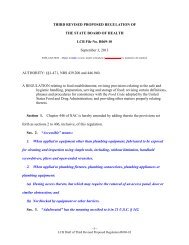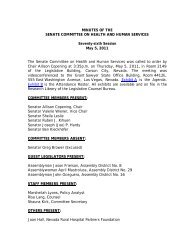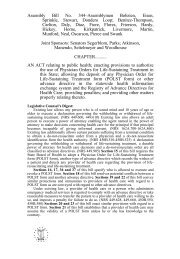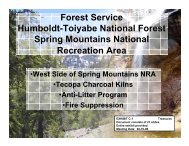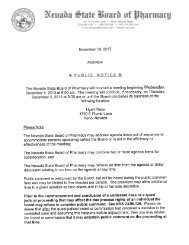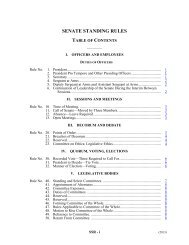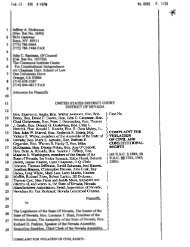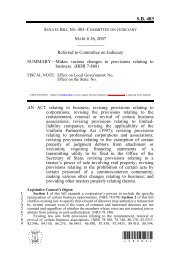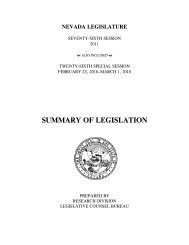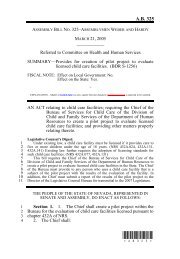Nevada Pre-Kindergarten Standards
Nevada Pre-Kindergarten Standards
Nevada Pre-Kindergarten Standards
Create successful ePaper yourself
Turn your PDF publications into a flip-book with our unique Google optimized e-Paper software.
1.PK.3 Act out roles that involve another child(ren) in related<br />
role; for instance, mother and baby, grocer and shopper.<br />
1.PK.6 Use available materials as either realistic or symbolic<br />
props as part of dramatic play.<br />
1.PK.7 Use dress-up clothes or costumes and other<br />
props in dramatic play.<br />
K1.3.6 Create simple sets and sound effects for a<br />
dramatized idea or story (e.g. tables become caves).<br />
K1.3.7 Assemble and use simple props, costumes, masks,<br />
or make-up for a dramatized idea or story.<br />
Content Standard 2.0: Dramatic Play<br />
Indicator D=Dramatic Play Examples: Children will/may... Supportive Practice: Practitioner/Adult will…<br />
2.PK.1 Distinguish between persons, animals, and<br />
objects by identifying characteristics (e.g., the sounds<br />
animals make).<br />
2.PK.2 Imitate roles observed in child’s life experiences.<br />
2.PK.3 Assume the role of a familiar person or thing<br />
and talk in the language/tone appropriate for that person<br />
or thing.<br />
K2.3.1 Identify traits of a person, animal, or object<br />
(e.g. What does a dog do when it’s happy? Wag its tail).<br />
K2.3.2 Imitate the traits of a given person, animal,<br />
or object.<br />
K2.3.3 Use voice and body to show different emotions<br />
while portraying a character in a dramatized idea or story.<br />
Creative Expression<br />
Re-enact roles that they are familiar<br />
with (e.g., shopping with mom, driving<br />
to school).<br />
Use props to help to enhance play.<br />
Use objects to represent a prop<br />
(e.g., box for a car, banana for a phone).<br />
Act like a favorite pet or animal and<br />
include the mannerisms or sounds that<br />
they make.<br />
Copy the mannerisms of a familiar<br />
person and use them during<br />
dramatic play.<br />
Use the language, speech patterns<br />
or use props to act like another person<br />
or thing.<br />
Read books about experiences that children<br />
are familiar with and can reenact.<br />
Provide books related to the theme of the<br />
dramatic play area (e.g., “grocery store”)<br />
to give ideas for roles to play.<br />
Allow children to direct the play and<br />
encourage cooperation with each other.<br />
Offer open-ended and/or natural materials<br />
(e.g., pinecones, polished stones, seashells)<br />
to encourage imaginative play.<br />
Put open-ended dress up clothes (e.g.,<br />
fabric or a variety of scarves) to encourage<br />
more imaginative and fantasy play.<br />
Allow and encourage children to use<br />
materials from other areas in the classroom<br />
in their dramatic play (e.g., using a wooden<br />
block as a walkie talkie).<br />
Allow children to act out many different<br />
characters or roles in the classroom.<br />
Let the children demonstrate how different<br />
roles and characters sound and<br />
behave.<br />
Discuss with children about familiar<br />
people and characters and how they<br />
speak and move.<br />
Provide props and costumes to aid the<br />
children in acting out roles and characters.<br />
When reading books, talk about the<br />
characters and how they look, sound,<br />
and act.<br />
60



